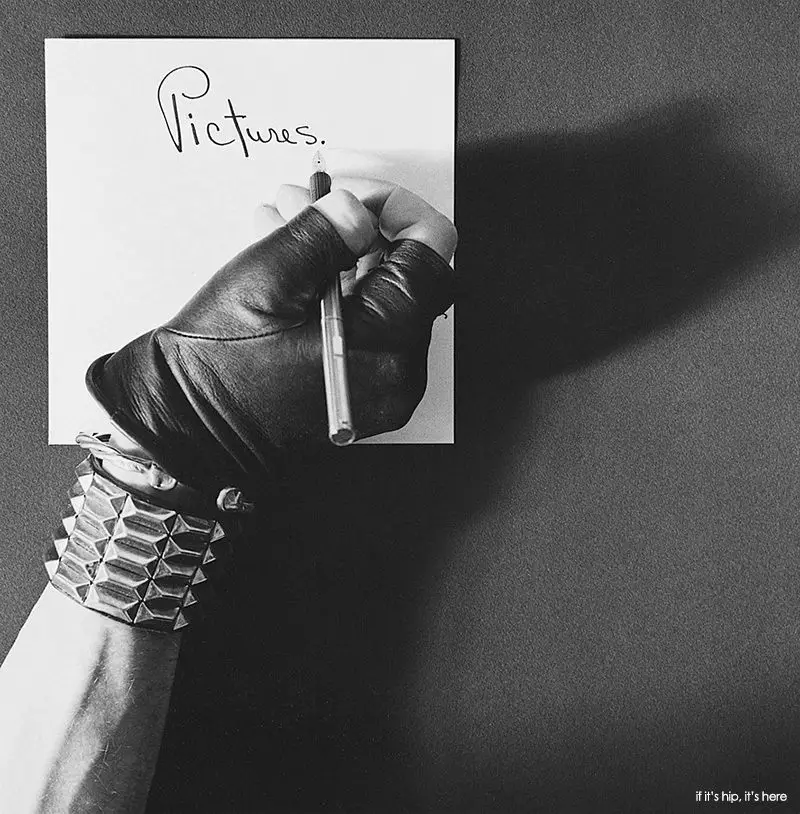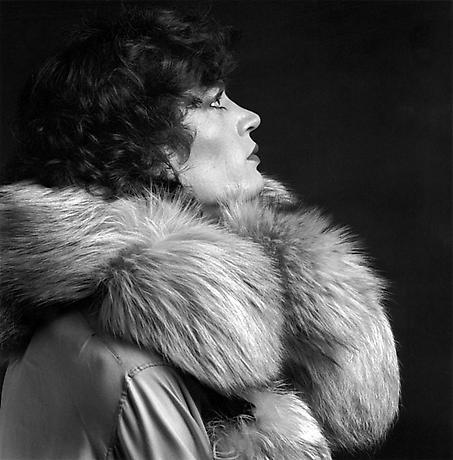
Robert Mapplethorpe (1946-1989) was known for his blunt and unabashedly honest photographs. Highly stylized black and white photos of male and female nudes, the S&M scene, self-portraiture, celebrity portraits, flowers and statuary were among his most common subjects. Now considered one of the greatest artists of the 20th century, Mapplethorpe: Look At the Pictures, a documentary directed By Fenton Bailey and Randy Barbato which premiered at the 2016 Sundance Film Festival will air as part of HBO Documentaries on Monday, April 4th.
HBO Documentaries Mapplethorpe: Look at the Pictures

The only thing more outrageous than Robert Mapplethorpe’s photographs was his life. He was obsessed with magic and in particular, with what he saw as the magic of photography and the magic of sex. He pursued both with insatiable dedication.

“Look at the pictures.” With these words, Jesse Helms denounced the work of Robert Mapplethorpe. Twenty-five years later, the first and most complete documentary about the artist since his death, by acclaimed directors Fenton Bailey and Randy Barbato, does just that,with unprecedented unlimited access to his archives and work.

Mapplethorpe might have had hundreds of lovers, but only a few were key relationships, almost all of whom are present in the film.

Rounding out this portrait of the artist are the recollections of his older sister Nancy and youngest brother Edward. An artist and photographer in his own right, Edward worked as Robert’s assistant for many years and was responsible for much of the technical excellence of the work.

But the most prominent voice in the documentary is Mapplethorpe’s own. Thanks to a number of rediscovered interviews, he is our narrator. Completely candid, shockingly honest, he speaks about his life, loves, and work. Seen through his eyes, they were a seamless whole, a complete work of art.

The result is a portrait of the artist who dedicated his life not only to becoming an artist but also to making his chosen medium, photography, respected and valued as a fine art. And he succeeded; His final show, The Perfect Moment, self-planned as he was dying of AIDS, proved to be a time bomb, igniting a culture war that still reverberates today. And since his death, his Foundation, worth hundreds of millions, has made multi-million dollar gifts enabling museums from the Guggenheim to the Getty to set up and maintain photography collections.
A Biography of the Artist (courtesy of The Robert Mapplethorpe Foundation):

Robert Mapplethorpe was born in 1946 in Floral Park, Queens. Of his childhood he said, “I come from suburban America. It was a very safe environment and it was a good place to come from in that it was a good place to leave.”

In 1963, Mapplethorpe enrolled at Pratt Institute in nearby Brooklyn, where he studied drawing, painting, and sculpture. Influenced by artists such as Joseph Cornell and Marcel Duchamp, he also experimented with various materials in mixed-media collages, including images cut from books and magazines. He acquired a Polaroid camera in 1970 and began producing his own photographs to incorporate into the collages, saying he felt “it was more honest.” That same year he and Patti Smith, whom he had met three years earlier, moved into the Chelsea Hotel.

Mapplethorpe quickly found satisfaction taking Polaroid photographs in their own right and indeed few Polaroids actually appear in his mixed-media works. In 1973, the Light Gallery in New York City mounted his first solo gallery exhibition, “Polaroids.” Two years later he acquired a Hasselblad medium-format camera and began shooting his circle of friends and acquaintances—artists, musicians, socialites, pornographic film stars, and members of the S & M underground. He also worked on commercial projects, creating album cover art for Patti Smith and Television and a series of portraits and party pictures for Interview Magazine.

In the late 70s, Mapplethorpe grew increasingly interested in documenting the New York S&M scene. The resulting photographs are shocking for their content and remarkable for their technical and formal mastery. Mapplethorpe told ARTnews in late 1988, “I don’t like that particular word ‘shocking.’ I’m looking for the unexpected. I’m looking for things I’ve never seen before … I was in a position to take those pictures. I felt an obligation to do them.” Meanwhile his career continued to flourish. In 1977, he participated in Documenta 6 in Kassel, West Germany and in 1978, the Robert Miller Gallery in New York City became his exclusive dealer.

Mapplethorpe met Lisa Lyon, the first World Women’s Bodybuilding Champion, in 1980. Over the next several years they collaborated on a series of portraits and figure studies, a film, and the book, Lady, Lisa Lyon. Throughout the 80s, Mapplethorpe produced a bevy of images that simultaneously challenge and adhere to classical aesthetic standards: stylized compositions of male and female nudes, delicate flower still lifes, and studio portraits of artists and celebrities, to name a few of his preferred genres.

He introduced and refined different techniques and formats, including color 20″ x 24″ Polaroids, photogravures, platinum prints on paper and linen, Cibachrome and dye transfer color prints. In 1986, he designed sets for Lucinda Childs’ dance performance, Portraits in Reflection, created a photogravure series for Arthur Rimbaud’s A Season in Hell, and was commissioned by curator Richard Marshall to take portraits of New York artists for the series and book, 50 New York Artists.

That same year, in 1986, he was diagnosed with AIDS. Despite his illness, he accelerated his creative efforts, broadened the scope of his photographic inquiry, and accepted increasingly challenging commissions. The Whitney Museum of American Art mounted his first major American museum retrospective in 1988, one year before his death in 1989.

His vast, provocative, and powerful body of work has established him as one of the most important artists of the twentieth century. Today Mapplethorpe is represented by galleries in North and South America and Europe and his work can be found in the collections of major museums around the world. Beyond the art historical and social significance of his work, his legacy lives on through the work of the Robert Mapplethorpe Foundation. He established the Foundation in 1988 to promote photography, support museums that exhibit photographic art, and to fund medical research in the fight against AIDS and HIV-related infection.

Watch Mapplethorpe: Look at the Pictures on HBO Max here.

Full Credits:
DIRECTOR Fenton Bailey / Randy Barbato
EXECUTIVE PRODUCER Sheila Nevins
PRODUCER Fenton Bailey / Randy Barbato / Katharina Otto-Bernstein / Mona Card
CINEMATOGRAPHER Huy Truong / Mario Panagiotopoulos
EDITOR Langdon F. Page
COMPOSER David Benjamin Steinberg
SENIOR PRODUCER Sara Bernstein
CO EDITOR Francy Kachler
ASSOCIATE PRODUCER Kathrin Lohmann / Jordan Papadopoulos
RESEARCHER Oleg Dubson / Joseph Ruscitto
all photos (C) Robert Mapplethorpe Foundation. Used by permission.
In other Mapplethorpe-related news, a new biopic of the photographer entitled ‘Mapplethorpe‘, directed by Ondi Timoner starring former Doctor Who actor Matt Smith along with Zosia Mamet.